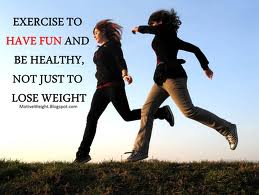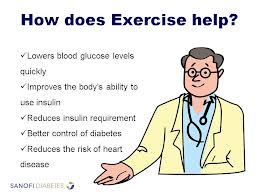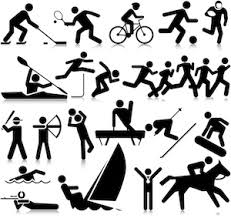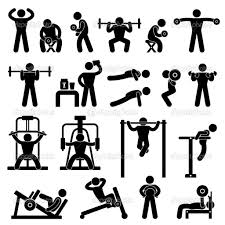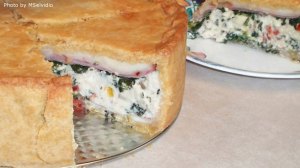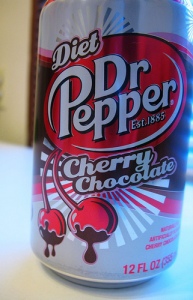Exercise is necessary for the maintenance of health and in treatment. In times past, when people were admitted into hospitals, they were confined to beds, now doctors know that without movement, muscles will become weak, circulation will be sluggish and recovery will be slower. Exercise is vital for our body system. We were created to work and labor for our food and other personal needs. Today majority lead a sedentary life style, they get up in the morning, go to work, sit at a desk for hours and then go home with limited body movements.
Ironically, many people don’t hear from their doctor about the benefits of exercise until they find themselves in the hospital and are told to get up and move around as soon as possible. There are many health risks associated with inactivity or lack of exercise:
- Tissues lose their elasticity.
- Lymph nodes’ ability to release toxins to combat infections is impaired.
- Muscles atrophy.
- The heart can lose its strength, causing heart disease and other cardiovascular problems.
- Hip muscles joints through lack of activity can become fragile and prone to breakage.
- Bones can lose density from lack of rebuilding which is stimulated by exercise, osteoporosis results.
Aside from preventing these conditions, exercise can aid your body in a variety of ways:
- It can improve your oxygen intake. Because the body responds to the need of more oxygen for the muscles during muscular activity, more breathing is required. Exercise may be used as a means to accomplish deeper breathing; it helps the body to produce new cells; it encourages better circulation.
- The heart is stimulated by controlled muscular activity.
- Exercise can aid in weight loss and prevent weight gain. According to George Malkmus “obesity is a simple math problem- we take in more calories than we burn and thus we gain weight. Once we burn more calories than we’re taking in, we lose weight and regulate metabolism”.
- Active muscles require more food than muscles at rest. Thus exercise may be employed as a means of stimulating appetite. It also furthers elimination and increases your HDL (the good cholesterol) and lowers your overall cholesterol.
- A proper amount of physical activity will encourage sleep. In many cases, sleeplessness can be relieved by a good walk before bedtime.
To achieve the best results, you should incorporate these three basic kinds of exercise in your routine and life style:
- Cardiovascular exercise- also known as aerobic exercise, strengthens your heart, clears and expands your lungs, builds stamina and transports oxygen into every cell of your body. Egs include cycling, swimming, and brisk walking, skipping rope, rowing, hiking, taking the stairs instead of the elevator. Etc
- Strength or resistance training- also known as anaerobic exercise. This will increase your muscle mass, bone density, balance and coordination. This doesn’t have to be about bench pressing twice your weight. It’s mainly about building healthy, firm muscle tone and maintaining it. However, the more muscle you build (up to a point), the more calories you burn even at rest and the stronger you feel. You can start out by buying some light dumbbells and use them daily, or you can use your own weight by doing pushups. Consistency is more valuable than pushing to do more. Your strength will grow according to the regularity of your strength training and your body will tell you when it’s ready to reach for more strength. Egs include weight training, pushups, lunges and biceps curls, functional training, eccentric and interval training, sprinting. Etc
- Flexibility exercise- this stretches and lengthens your muscles. The goal is to improve your range of motion, eliminate stiffness and enhance the function of your joints. Stretching will also free up congestion in tissues and release toxins much more than cardiovascular or strength exercise can, so be sure to drink clean water and fresh juice before and after stretching to support elimination of toxins.
Many individuals usually cite lack of time as a limiting factor in exercise and weight loss. However if you are one of those, try fitting some of these options into your daily schedule-
- Getting up early in the morning and devoting 5-10 minutes stretching your body.
- Work out with a pal if you need some motivation.
- Do “alternative” exercise- take the stairs instead of the elevator, carry your groceries to the care instead of having the grocery clerk do it, park at the back of the parking lot instead of close to the building so you have to walk a little more. Etc every little bit of exercise counts, so always choose the alternative to the sedentary life style.
Inappropriate exercise can result to injury. Moderation is very important in any physical activity. Too much exercise can be detrimental causing more harm than good. Without proper rest, stroke may develop, muscle tissue development is impaired, and muscle damage (rhabdomylosis) may occur, amenorrhea (miss of monthly period) in women has been recorded. Etc
In general, a program of exercise should be associated with a purpose or goal and when finished with a sense of accomplishment. Rather than think of it as a time expense, think of it as an investment with increased yield of efficiency, vitality and alertness. It is better to link exercise with a hobby (gardening, building, exploring, etc) than simply going through the movements. You’ll be amazed at how investing a little time in building and improving your health will make your remaining time more profitable.
Cheers!
